Samuels Avenue (Part 1): First and, for a While, Foremost Posted on September 22, 2018 by hometown The Samuels Avenue neighborhood is one of Fort Worth’s most evocative. When the town first expanded out from the abandoned military fort, it expanded northeastward into the peninsula formed by a bend of the river, toward Traders Oak, where Henry Clay Daggett and Archibald Leonard had begun the town’s first business in 1849 and where the county’s first election had been held in 1850, toward the Cold Springs, a popular recreation area where in 1859 Sam Houston spoke to an Independence Day crowd. Later attractions were the driving park (see Part 2), where people went to ride and race and bet, and the pavilion (see Part 3), where people went to picnic and dance and be entertained. Also on Samuels Avenue is aptly named Pioneers Rest, the town’s first cemetery, a who’s who of local history: Buried therein are Major Ripley Arnold, General Edward H. Tarrant, General James J. Byrne, Captain Ephraim Merrell Daggett, Captain Charles Turner, Colonel Abe Harris, Josephine H. Ryan, Roger Tandy, Jesse Zane-Cetti, Carroll Peak, and Lemuel Edwards. samuel grave-stone
Baldwin L. Samuel, born in Kentucky on September 22, 1803, also is buried in Pioneers Rest (he donated land for the cemetery’s enlargement).
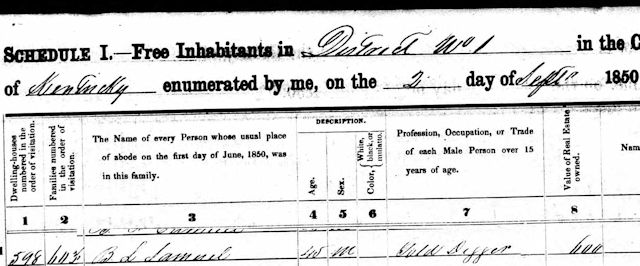
Baldwin L. Samuel was listed in the 1850 Todd County, Kentucky census as a “gold digger.”
 By about 1857 Baldwin Samuel was in Fort Worth because in 1869 he told a Tarrant County voter registration canvasser that he had been in the precinct twelve years. Samuel bought the Terry plantation near Traders Oak about 1870.
By about 1857 Baldwin Samuel was in Fort Worth because in 1869 he told a Tarrant County voter registration canvasser that he had been in the precinct twelve years. Samuel bought the Terry plantation near Traders Oak about 1870.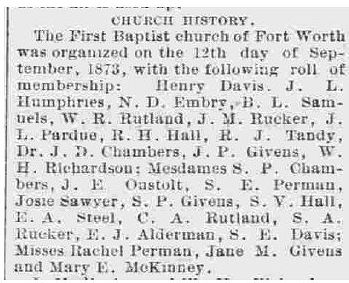 Samuel, like Roger Tandy, was a charter member of the First Baptist Church.
Samuel, like Roger Tandy, was a charter member of the First Baptist Church.
After Samuel died in 1879, the road from his plantation to downtown came to bear his name. Samuels Avenue runs along a bluff and still has the same grand view over the river that Ripley Arnold saw in 1849 and that Baldwin Samuel saw about 1857.
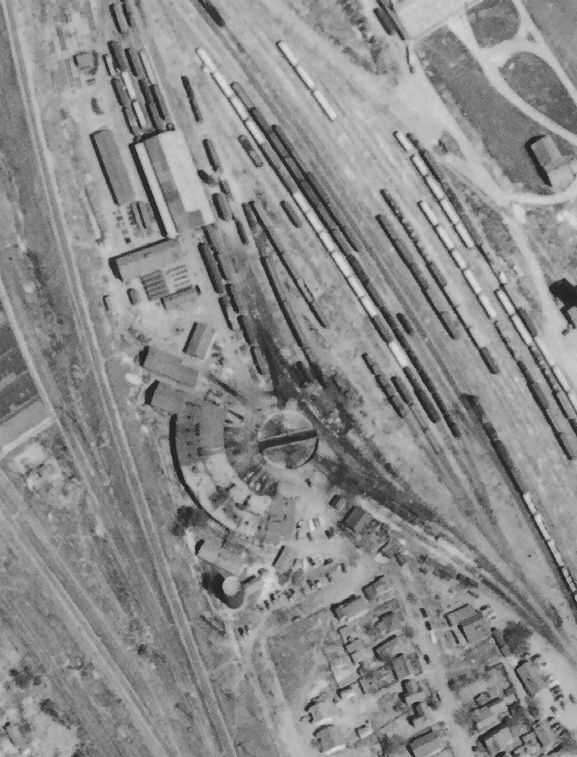 During the neighborhood’s long history it has hosted the fine houses of the wealthy and the shotgun houses and other modest homes of laborers, such as residents of the Rock Island neighborhood east of Samuels Avenue, where the railroad’s switchyard was located.
During the neighborhood’s long history it has hosted the fine houses of the wealthy and the shotgun houses and other modest homes of laborers, such as residents of the Rock Island neighborhood east of Samuels Avenue, where the railroad’s switchyard was located.
The Samuels Avenue neighborhood still has a few houses from the nineteenth century, but time, fire, neglect, and development have claimed most of the oldest houses.
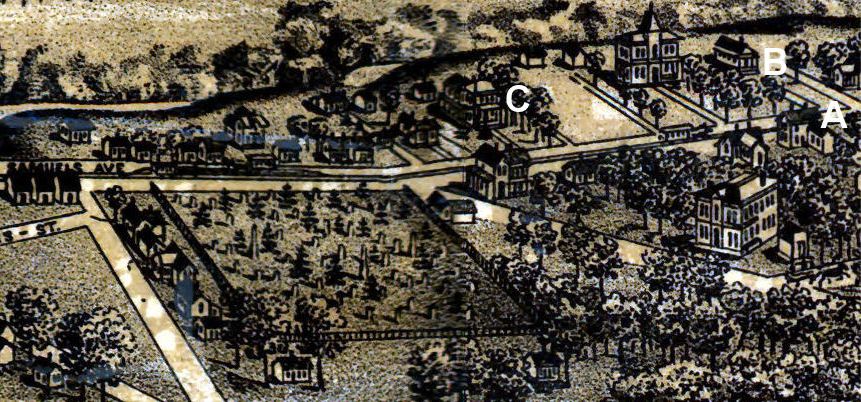 This is a bird’s-eye-view map of the Samuels Avenue neighborhood published in 1886. You can see the square of Pioneers Rest Cemetery. That’s Samuels Avenue running east to west across the top of the cemetery; Cold Springs Road runs at a four o’clock angle. Believe it or not, the three houses marked A, B, and C are still standing.
This is a bird’s-eye-view map of the Samuels Avenue neighborhood published in 1886. You can see the square of Pioneers Rest Cemetery. That’s Samuels Avenue running east to west across the top of the cemetery; Cold Springs Road runs at a four o’clock angle. Believe it or not, the three houses marked A, B, and C are still standing.
Here are the three today:
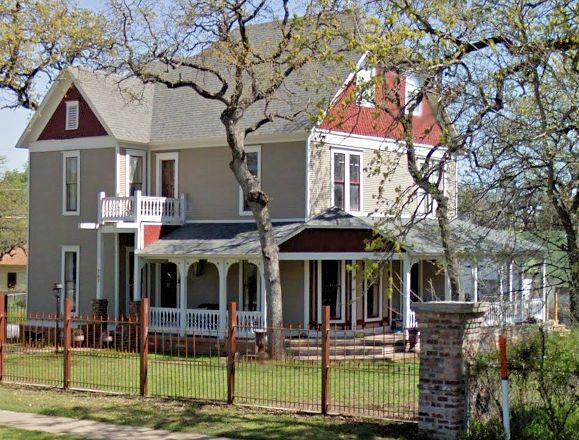 A is the Getzendaner house (1880s). John Getzendaner is listed in the 1885 city directory as a stockman. The house has been renovated.
A is the Getzendaner house (1880s). John Getzendaner is listed in the 1885 city directory as a stockman. The house has been renovated.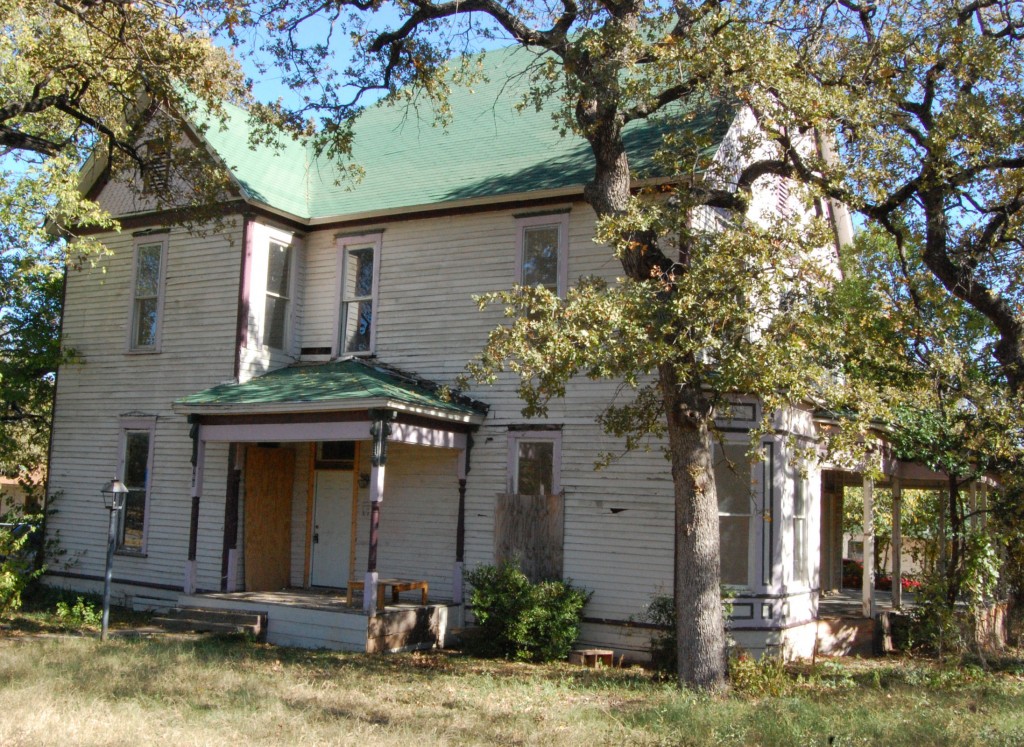 Before renovation.
Before renovation.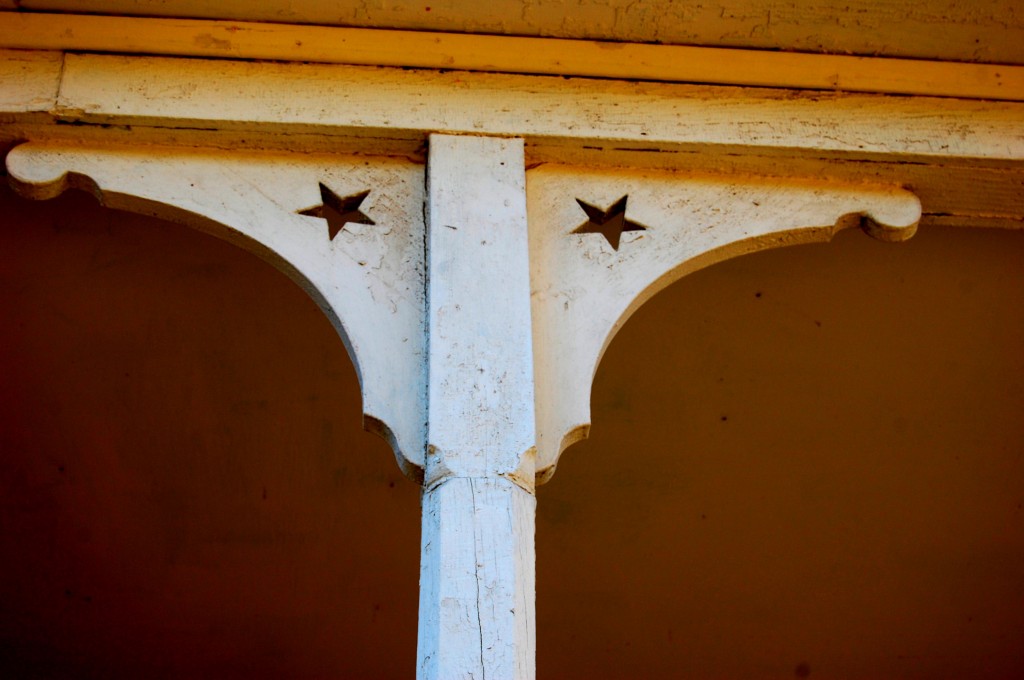 A column brace of the back porch of the Getzendaner house.
A column brace of the back porch of the Getzendaner house.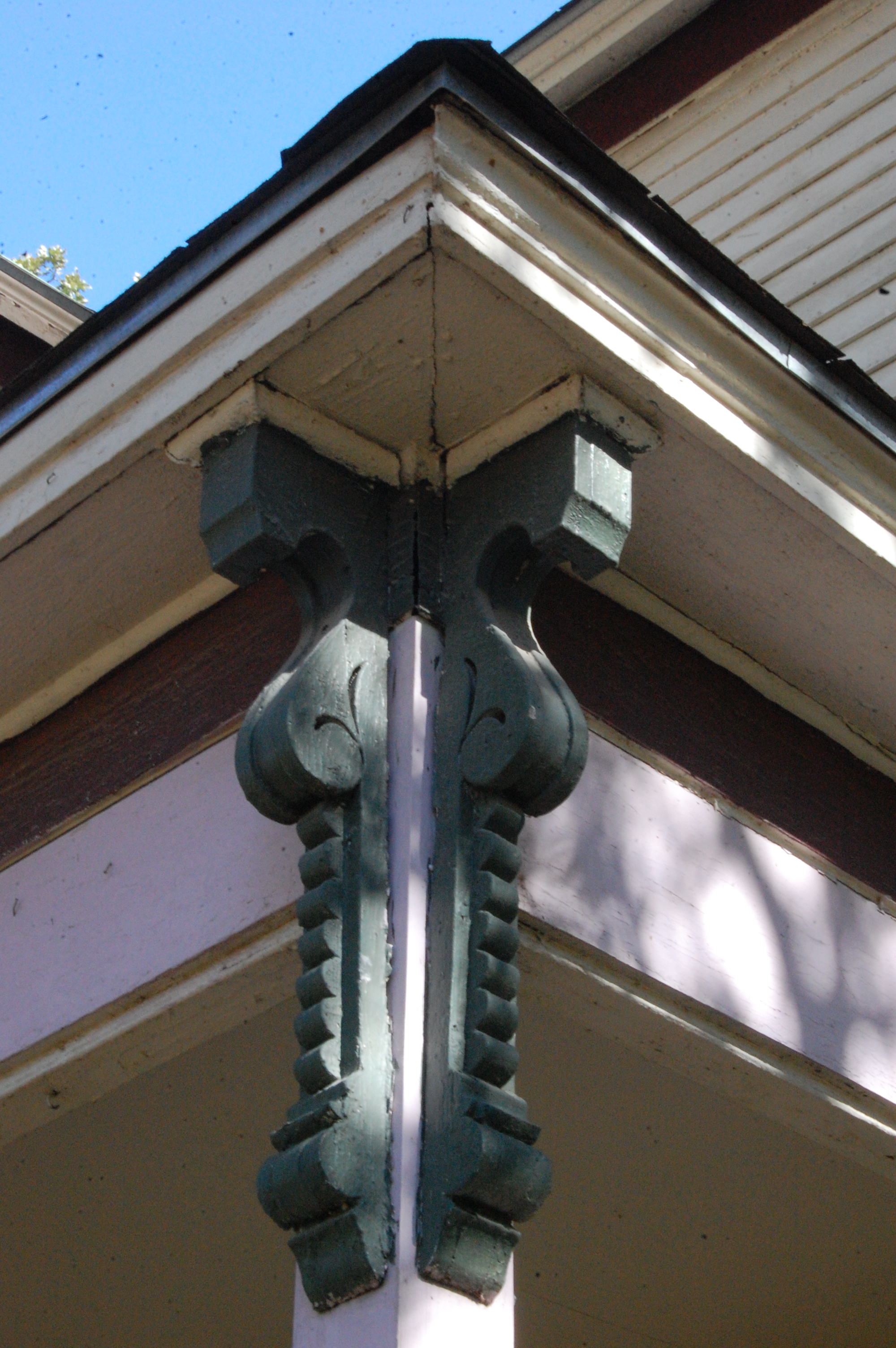 Eave brackets of Getzendaner house before renovation.
Eave brackets of Getzendaner house before renovation.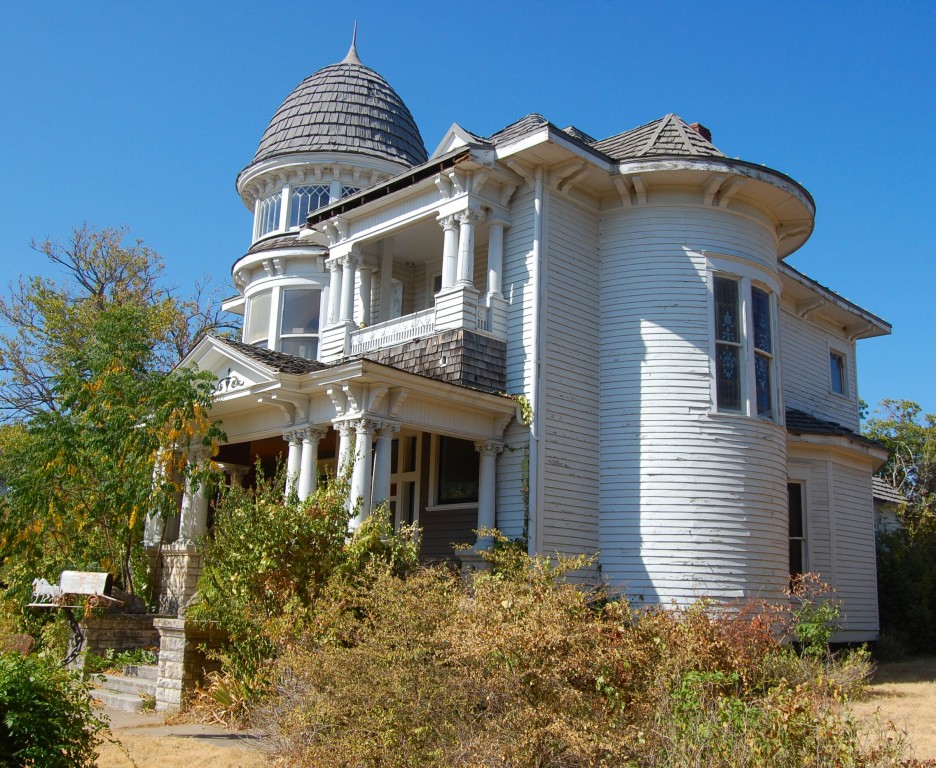 B became the rear part of today’s Garvey house (1890s). The front part of the house was added after the 1886 map was drawn. William Garvey was listed in the 1885 city directory as a sand dealer. The Garvey house has a new owner and is being renovated.
B became the rear part of today’s Garvey house (1890s). The front part of the house was added after the 1886 map was drawn. William Garvey was listed in the 1885 city directory as a sand dealer. The Garvey house has a new owner and is being renovated.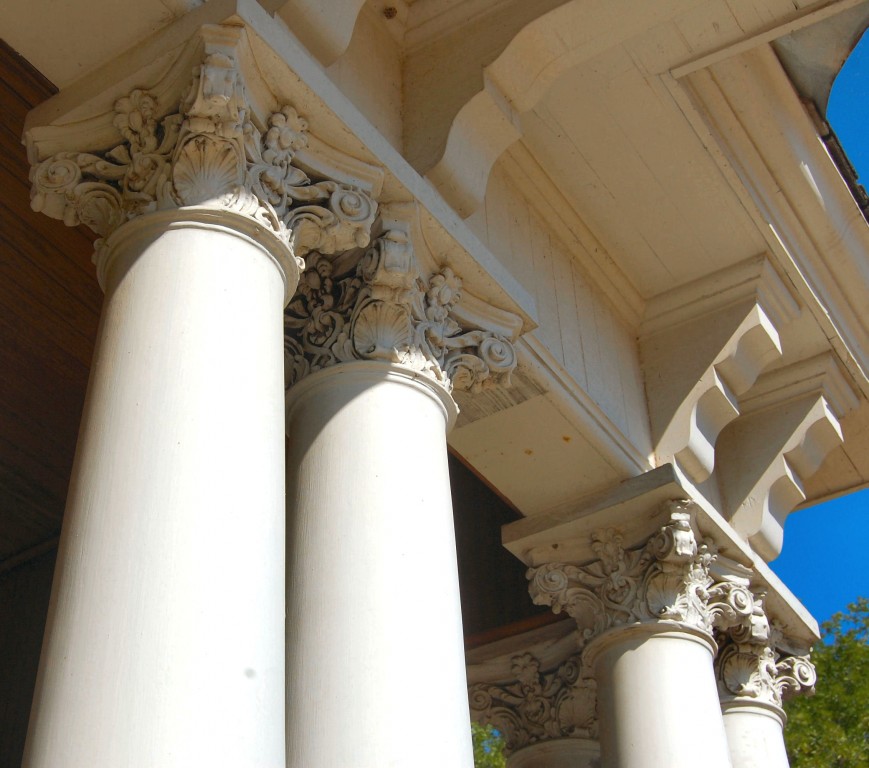 Columns and capitals of the Garvey house before renovation.
Columns and capitals of the Garvey house before renovation.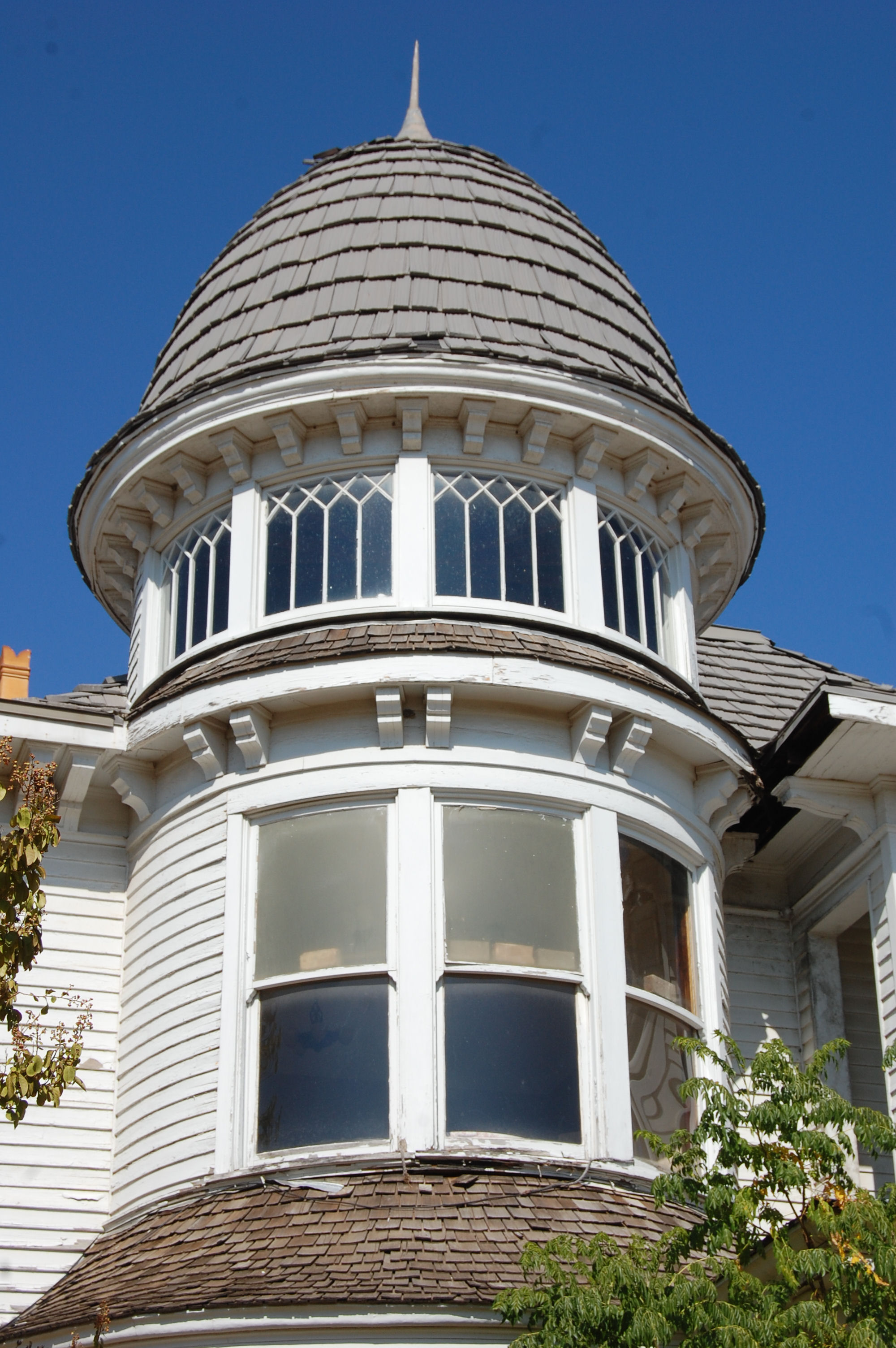 Garvey house turret.
Garvey house turret.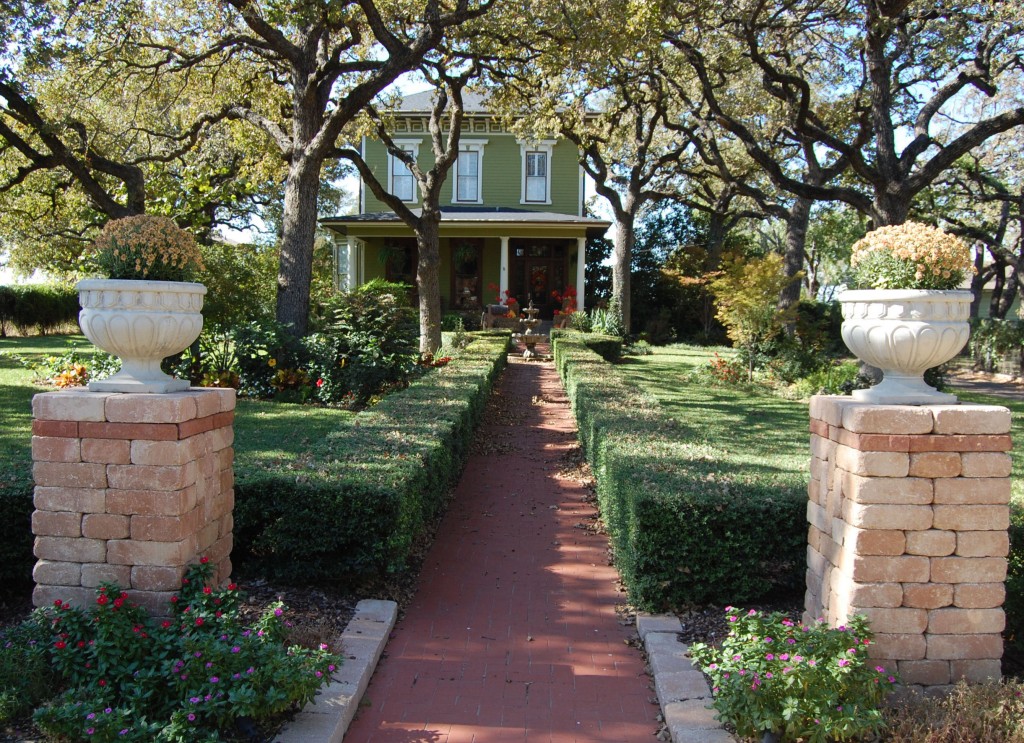 C is the Bennett house (1870s). David Chapman Bennett was listed in the 1877 city directory as a vice president of Martin Bottom Loyd’s First National Bank. The Bennett house is wonderfully preserved.
C is the Bennett house (1870s). David Chapman Bennett was listed in the 1877 city directory as a vice president of Martin Bottom Loyd’s First National Bank. The Bennett house is wonderfully preserved.
These three houses survive into their third century in Fort Worth’s first neighborhood, where they share Samuels Avenue with now-vacant lots whose steps lead to nowhere:
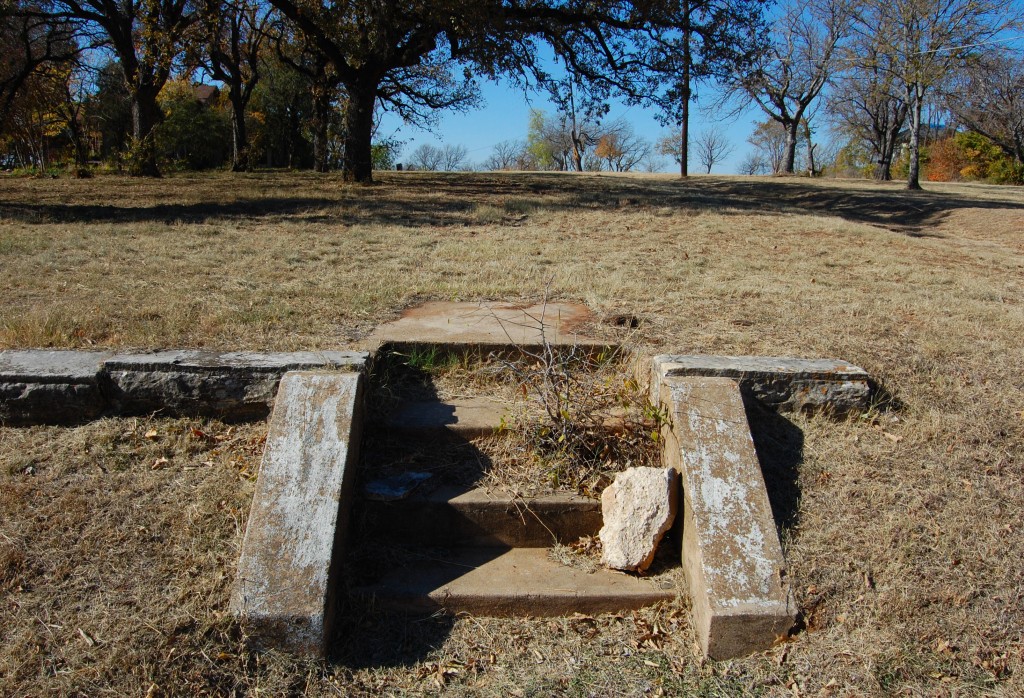 These steps once led to the grand Foster-Hodgson-Pool house overlooking the river (built in 1882, demolished in 2003). On the map the house can be seen between B and C. (Pool family members who lived here included D. McRaeElementary School teacher Alma Pool.)
These steps once led to the grand Foster-Hodgson-Pool house overlooking the river (built in 1882, demolished in 2003). On the map the house can be seen between B and C. (Pool family members who lived here included D. McRaeElementary School teacher Alma Pool.)
(Thanks to Samuels Avenue resident, historian, and preservationist John Shiflet for his help.)
This entry was posted in Architecture, Casas Grande, Century Club, Cities of the Dead, Downtown, Downtown, All Around, Life in the Past Lane. Bookmark the permalink.
By about 1857 Baldwin Samuel was in Fort Worth because in 1869 he told a Tarrant County voter registration canvasser that he had been in the precinct twelve years. Samuel bought the Terry plantation near Traders Oak about 1870.
 Samuel, like Roger Tandy, was a charter member of the First Baptist Church.
Samuel, like Roger Tandy, was a charter member of the First Baptist Church.
After Samuel died in 1879, the road from his plantation to downtown came to bear his name. Samuels Avenue runs along a bluff and still has the same grand view over the river that Ripley Arnold saw in 1849 and that Baldwin Samuel saw about 1857.
During the neighborhood’s long history it has hosted the fine houses of the wealthy and the shotgun houses and other modest homes of laborers, such as residents of the Rock Island neighborhood east of Samuels Avenue, where the railroad’s switchyard was located.
The Samuels Avenue neighborhood still has a few houses from the nineteenth century, but time, fire, neglect, and development have claimed most of the oldest houses.
This is a bird’s-eye-view map of the Samuels Avenue neighborhood published in 1886. You can see the square of Pioneers Rest Cemetery. That’s Samuels Avenue running east to west across the top of the cemetery; Cold Springs Road runs at a four o’clock angle. Believe it or not, the three houses marked A, B, and C are still standing.
Here are the three today:
These three houses survive into their third century in Fort Worth’s first neighborhood, where they share Samuels Avenue with now-vacant lots whose steps lead to nowhere:
A is the Getzendaner house (1880s). John Getzendaner is listed in the 1885 city directory as a stockman. The house has been renovated.















22 Responses to Samuels Avenue (Part 1): First and, for a While, Foremost